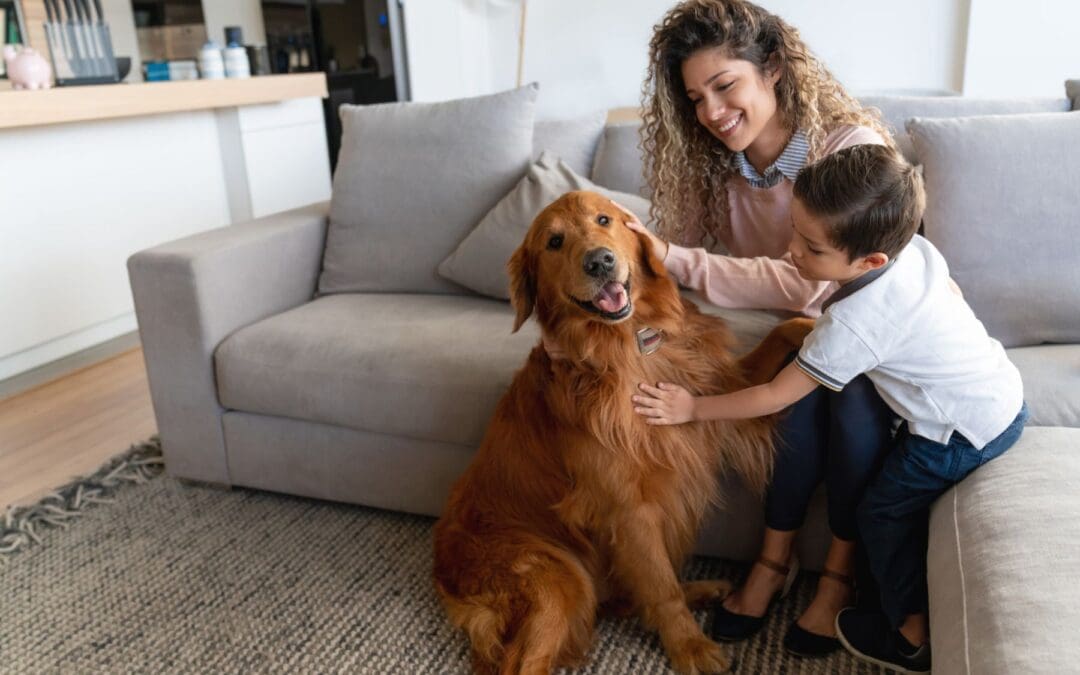Creating a truly pet-friendly home goes far beyond simply buying a comfy bed and a bowl. It requires seeing your world through their eyes, crawling on the floor if necessary, to identify and neutralize potential dangers. A proactive approach is the single most important step to keeping your furry companion happy and healthy.
The Foundation of a Pet-Friendly Home
Start your pet-proofing journey by systematically addressing the most common household risks. These items are tempting to pets but pose the greatest threat to their well-being.
Secure Toxic Substances
Poisoning is a frequent and entirely preventable emergency. All medications, whether prescription or over-the-counter, must be stored securely. This includes vitamins, supplements, and pet-specific medications, which can be harmful if a pet consumes too much. Keep all household cleaning products, detergents, and chemicals locked inside cabinets, ideally using child-proof latches, as many pets can learn to open doors. Likewise, ensure the toilet lid is always closed, especially if you use automatic bowl cleaners, as the treated water can be toxic.
Contain Choking and Ingestion Risks
Small objects are prime choking hazards or can cause life-threatening internal obstructions if swallowed. This includes items you might not think twice about: coins, batteries (especially small button batteries, which can cause severe chemical burns), hair ties, rubber bands, jewelry, and small children’s toys. Store these items in high, secure drawers. For dogs, even seemingly harmless items like socks, shoes, or discarded plastic packaging can lead to an emergency room visit. Maintain a clutter-free floor and keep laundry securely stored in closed hampers or behind closet doors.
Address Electrical Dangers
Electrical cords are an irresistible chew toy for puppies, kittens, and even adult pets. Chewing live wires can result in severe burns, electrical shock, or even death. Use commercial cord covers or tubing to secure and hide all wires and cables, or route them behind heavy furniture where a pet cannot access them. For dangling cords, like those on window blinds, tie them up and out of reach to eliminate the risk of strangulation.
Remove Toxic Plants
Many beautiful and common houseplants are highly toxic to pets. A single bite can lead to symptoms ranging from mild stomach upset to organ failure. Before bringing any new plant into your home, confirm that it is safe for pets. Some well-known toxic plants include lilies (especially dangerous to cats), sago palm, rhododendron, and azaleas. Replace them with pet-safe alternatives or place them in an area your pet cannot reach, such as a high shelf or a designated “pet-free” room.
Designing a Truly Pet-Friendly Home
Once the hazards are controlled, focus on making your home comfortable and durable for your pet.
Choose Durable Materials
Pets introduce wear and tear, but smart material choices can minimize damage. Look for flooring like tile, laminate, or sealed hardwood, which are easy to clean and resistant to scratches and odors. If you have rugs, opt for machine-washable area rugs. For furniture, choose durable, easy-to-clean fabrics like microfiber, leather, or outdoor-grade materials. If your pet likes to climb, anchor all tall or unsteady furniture, such as bookcases and televisions, to the wall to prevent them from toppling over.
Establish a Dedicated Pet Space
Every pet needs a sanctuary. Designate a specific area for your pet’s necessities. This space should include a cozy bed or crate, a feeding station (consider a water fountain to encourage hydration), and a designated toy bin. A dedicated, comfortable spot helps your pet feel secure and encourages them to use their own things instead of your furniture and belongings. For cats, this sanctuary should include strategically placed, sturdy scratching posts and high-up climbing structures like a cat tree to satisfy their natural instincts.
Pet-Friendly Home: Frequently Asked Questions
What should I do if my pet eats a toxic food or item?
If you suspect your pet has ingested something poisonous, remain calm and immediately call your veterinarian or a pet poison control hotline. Do not wait for symptoms to appear. Have the container or a sample of what your pet ate ready to provide to the professional. Do not try to induce vomiting unless specifically instructed to do so by a veterinary professional.
How can I stop my dog from chewing electrical cords?
Physical barriers are the best method. Use cord covers, electrical conduit, or hide cords behind furniture. You can also try applying a non-toxic, bitter-tasting deterrent spray designed for pets directly onto exposed cords. Always provide your dog with plenty of appropriate chew toys as a safe alternative.
How many litter boxes should a cat have?
The general rule for cat households is one litter box per cat, plus one extra. Place litter boxes in quiet, easily accessible locations. Keeping them clean is essential; scoop them daily to ensure your cat uses them consistently.
What is the “all-fours inspection”?
The all-fours inspection means getting down on your hands and knees to see your home from your pet’s perspective. This view reveals low-lying hazards like small dropped objects, exposed wires, and tempting dust bunnies that might otherwise go unnoticed at your eye level.
Jamie Schaefer, Professional Home Inspector, provides home inspection services to The Villages, Florida, and the surrounding cities and towns in Central Florida and the New York Metropolitan Area. If you’re buying or selling a property, contact us to request an appointment.

